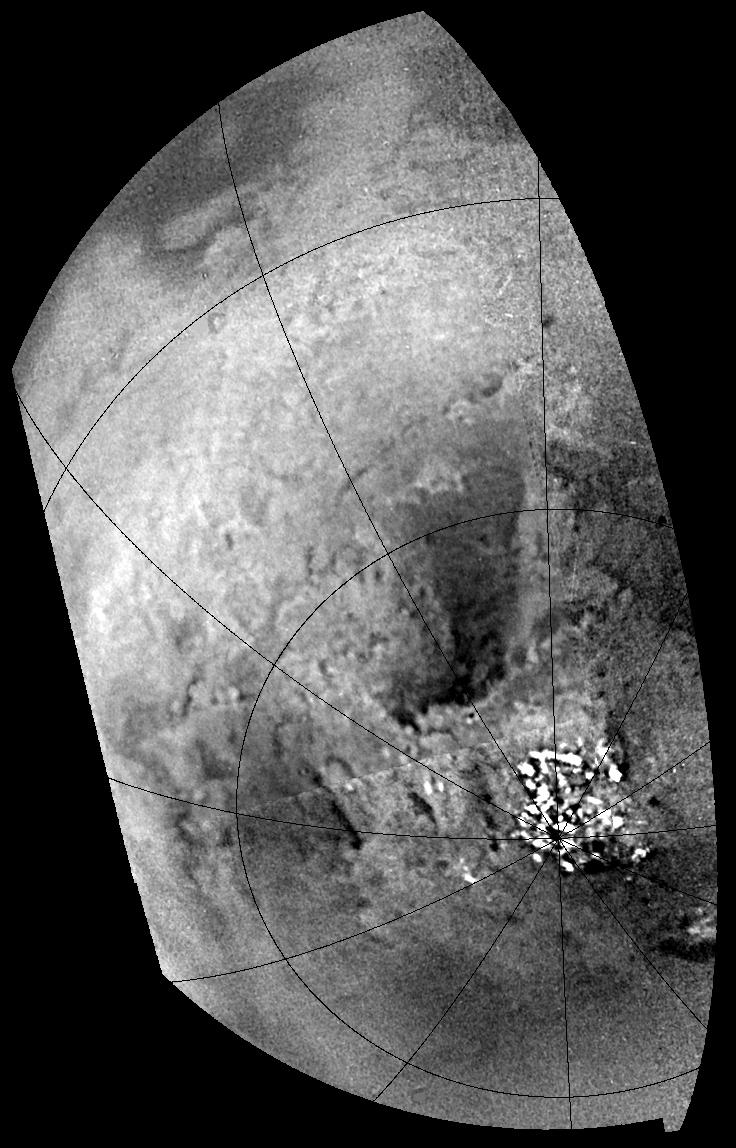Tracing Surface Features on Titan — Mosaic

| PIA Number | PIA06203 |
|---|---|
| Language |
|
This mosaic of Titan's south polar region was acquired during Cassini's first and distant encounter with the smog-enshrouded moon on July 2, 2004. The spacecraft approached Titan at a distance of about 340,000 kilometers (211,000 miles) during this flyby.
This is a contrast-enhanced version of a previously released image (see Titan's Mottled Surface), which allows surface details to be seen more easily. The very bright features near the south pole are clouds.
Due to Titan's thick, hazy atmosphere, the sizes of surface features that can be resolved are a few to five times larger than the actual pixel scale. At this distance, pixel scale is 2 kilometers (about 1 mile), so features larger than several kilometers across are resolved in the images.
A montage containing pairs of close-up images from this mosaic is also available (see Tracing Surface Features on Titan -- Close-up).
The Cassini-Huygens mission is a cooperative project of NASA, the European Space Agency and the Italian Space Agency. The Jet Propulsion Laboratory, a division of the California Institute of Technology in Pasadena, manages the mission for NASA's Science Mission Directorate, Washington, D.C. The Cassini orbiter and its two onboard cameras were designed, developed and assembled at JPL. The imaging team is based at the Space Science Institute, Boulder, Colo.
For more information about the Cassini-Huygens mission visit http://saturn.jpl.nasa.gov . For additional images visit the Cassini imaging team homepage http://ciclops.org .
Credit: NASA/JPL/Space Science Institute
